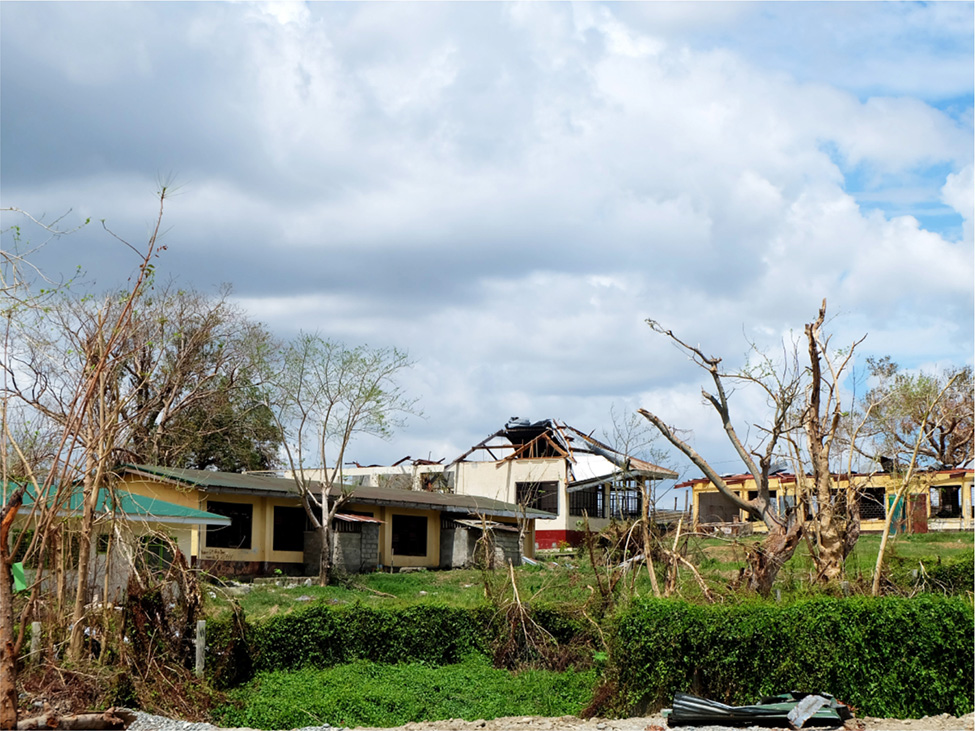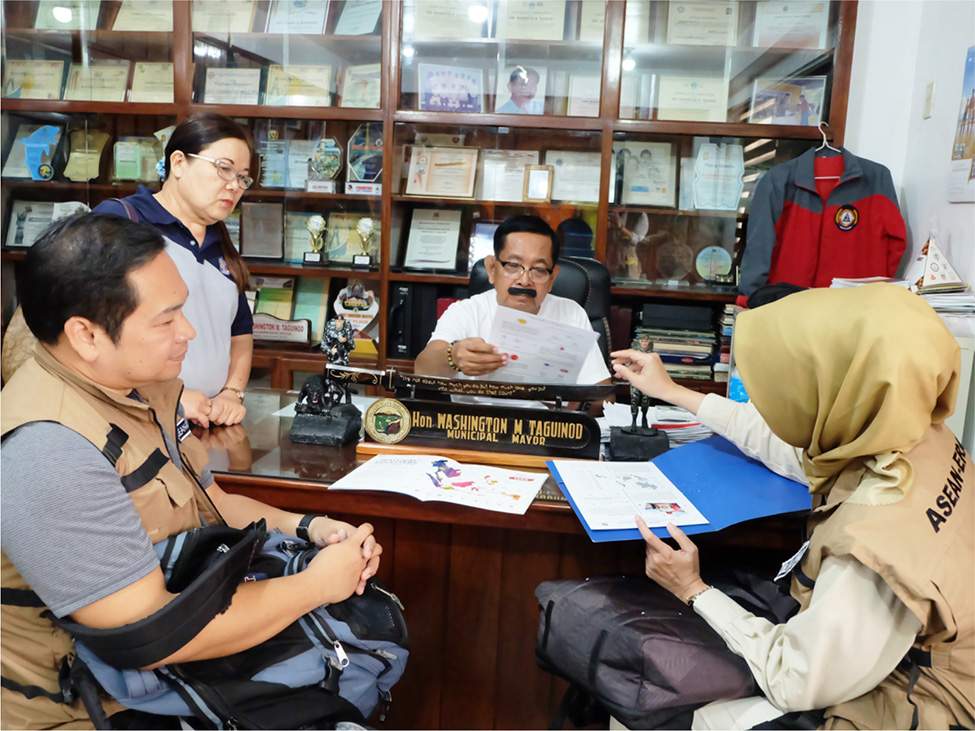Vol 43-ONE ASEAN ONE RESPONSE for Typhoon Mangkhut

ONE ASEAN ONE RESPONSE
FOR TYPHOON MANGKHUT
By mid-September it was all-hands-on-deck in the AHA Centre, with the monitoring team tracking the formation of largest storm cell of the year so far, as it made its way across the Pacific Ocean with a population of millions across the Philippines directly in its path. Communities along the nation’s northern coastline and outer islands were being evacuated, as preparation was well underway for the onset of Super Typhoon Mangkhut (Ompong). On the 15th of September, Typhoon Mangkhut made landfall in Cagayan Province, continuing its path westward with extreme winds and lashing rain, and leaving in its trail over 2.5 million people affected across the Philippines.
Afterwards, a total of 8 provinces and seven cities/municipalities have been announced under state of emergencies, with widespread damage to homes, infrastructure and livelihoods. Typhoon Mangkhut – that had an actual diameter larger than 2013’s Typhoon Haiyan – claimed over 50 lives, with hundreds more injured, and over 180,000 homes either fully or partially damaged. Total damage has been estimated at over USD 6 million, with communities particularly affected by secondary hazards that accompanied the typhoon, such as flooding and landslides. However, was it not for the coordinated effort in the days prior to the storm by the various national and sub-national agencies, alongside communities themselves, loss of life and damage could have been far worse.
“We pre-positioned the Cagayan Valley Response Team in advance, with early evacuation taking place two days prior to the typhoon’s landfall. We also estimated the numbers of people likely to be affected, and provided hygiene kits, non-food items, and generators. These preparedness measures managed to minimise casualties in our region”, explained Mr. Dante Balao, the Regional Director of Office of Civil Defense (OCD) Regional Office II, in Tuguegarao, Cagayan.
Alongside tracking the progress of Typhoon Mangkhut in the weeks and days leading-up to the disaster, the AHA Centre was also engaged with the Philippines Government, through the Philippines’ National Disaster Risk Reduction and Management Council (NDRRMC), in both the preparation and response to the storm. At a later stage, the ASEAN Emergency Response and Assessment Team (ERAT) was mobilised to provide information management and assessment report as the emergency phase coming to an end. On the 15th of September, just hours after the typhoon made landfall, the AHA Centre In-Country Liaison Team arrived in the Philippines, to establish direct communication with the NDRRMC in Manila and in affected areas, and to facilitate ASEAN’s assistance to those in need.
In response to the disaster, the AHA Centre mobilised relief items valued at over USD 275,000 to communities across the affected regions, including 30 tonnes of rice, four generator sets, and 2,000 rolls of tarpaulins. During the handover ceremony on September 24th, Undersecretary Ricardo B. Jalad, the Executive Director of NDRRMC and the Administrator of the Philippines’ Office of Civil Defense showed his appreciation for ASEAN’s support when he stated “I would like to thank and express my deep gratitude to the AHA Centre for facilitating this assistance”.
While Typhoon Mangkhut was a disastrous event for the Philippines and the ASEAN region, it presented an opportunity for the AHA Centre and ASEAN-ERAT to engage on a new element as part of the region’s ongoing efforts to improve disaster management practices. Three ASEAN-ERAT information management specialists were deployed to support the NDRRMC office with data analysis, data visualisation and report writing. One of the ASEAN-ERAT Level 2 members deployed to the Philippines, Adiratna Wira from Malaysia, recognised the importance of information management support for response agencies during disasters. “Aside from the actual products developed, there was great benefit for both the NDRRMC and ASEAN-ERAT members”, said Adiratna. “There was increased understanding in the roles and ways of working for each party, which could speed-up a range of processes and information distribution in the future.”
On the last day of the ASEAN-ERAT’s deployment, Mr. Edgar Posadas, the Director of Operations Service and Spokesperson of the NDRRMC emphasised, “we know that our region is always at risk of disasters, but with neighbours like you and friends like you, we know that things will be moving forward. We are thankful to our ASEAN neighbours and the AHA Centre for your help. The ASEAN region is advancing, we don’t have to go beyond our borders (to respond to disasters), so those beyond the ASEAN corridors can attend to their own disasters. I think it’s a way to go now, everybody is trying to be self-sufficient. We have to be ready should simultaneous disasters are taking place. So, the more capacity that we have and the more prepared we are, the better it will be for the people”.
Written by: Shintya Kurniawan | Photo : AHA Centre
- Published in Highlight






